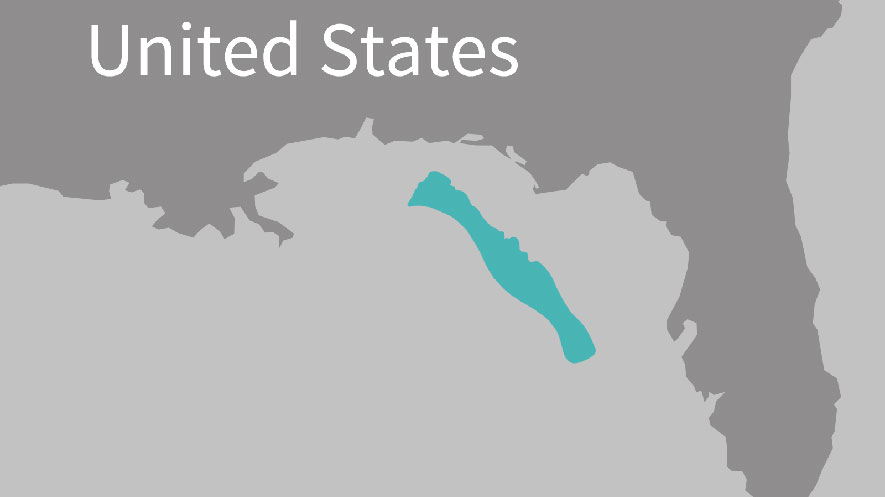The latest Critically Endangered list from the International Union for Conservation of Nature (IUCN) includes the Gulf of Mexico whale, a subspecies of Balaenoptera edeni. According to IUCN, this mammal is at risk of being the first baleen whale to go extinct since the Atlantic grey whale (Eschrichtius robustus) three centuries ago.
The Gulf of Mexico whale is similar to Bryde’s and Eden’s whales (both also named B. edeni) but is genetically distinct from both. It is entirely confined to US waters in the Gulf of Mexico, primarily in the vicinity of De Soto Canyon.
Survey data put its abundance at 33 individuals in 2009, and modelling suggests that almost half its habitat was affected by the Deepwater Horizon oil spill in 2010 (click here). It is estimated that 48% of the subpopulation was exposed to oil, that 22% (95% CI 10–31) of females suffered from reproductive failure, and 18% (95% CI 7–28) of the overall population suffered adverse health effects (DWH MMIQT 2015). Population modelling suggests a maximum possible decline in the subpopulation of 22% (i.e., 5-6 whales from a population estimated for the oil spill damage assessment of 26). Other potential threats to the whale population include entanglement in fishing gear and ship strikes. Although the population-level impacts of chronically elevated anthropogenic noise on baleen whales remain poorly understood (Estabrook et al. 2016), this stressor is of concern in the case of Gulf of Mexico Whales.
Conservation actions
The US National Marine Fisheries Service is currently assessing whether Gulf of Mexico Whales should be listed as Endangered or Threatened under the Endangered Species Act (see Rosel et al. 2016).
The Bryde’s Whale species complex (B. edeni and subspecies) is included in Appendix I of the Convention on International Trade in Endangered Species (CITES). The species complex (B. edeni and subspecies) is listed in Appendix II of the Convention on Migratory Species (CMS).
There are closures on pelagic longline fisheries in the region of De Soto Canyon (Rosel et al. 2016). However, there is concern that these whales forage at the bottom (Soldevilla et al. 2017) in an area of bottom longline fishing. A moratorium on oil exploration and development within approximately 200 km of the coast of Florida and east of 86° 41'W is set to expire in 2022 (Rosel et al. 2016). This means that in much of the Gulf of Mexico Whale’s present habitat the risk of entanglement has been reduced, as has the risk of ship strike (at least from vessels servicing oil platforms) compared with much of the rest of the Gulf of Mexico (at least within US waters). Although these spatially explicit actions were not put in place to help conserve Gulf of Mexico Whales, they provide some de facto protection to them.
Citation:
Corkeron, P., Reeves, R. & Rosel, P. 2017. Balaenoptera edeni. The IUCN Red List of Threatened Species 2017: e.T117636167A117636174. Downloaded on 08 February 2018.





